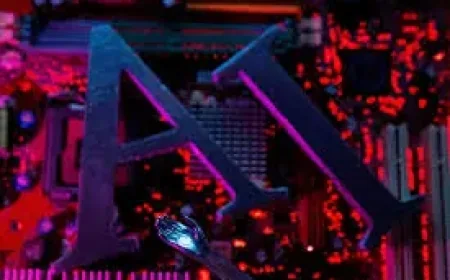The James Webb Space Telescope Spotted a Little Red Dot
Using the James Webb Space Telescope, astronomers have discovered a massive supermassive black hole that existed during a period of the universe known as "Cosmic Noon," which occurred approximately 4 billion years after the Big Bang.

Using the James Webb Space Telescope, astronomers have discovered a massive supermassive black hole that existed during a period of the universe known as "Cosmic Noon," which occurred approximately 4 billion years after the Big Bang. This discovery could shed further light on the mystery of how supermassive black holes grow to become millions, even billions, of times the size of the Sun.
This black hole is part of a collection of objects the James Webb Space Telescope (JWST) is searching for in the early universe, known as "little red dots," mysterious particles of light recently discovered thanks to the incredibly powerful infrared eye of this $10 billion space telescope. However, there's nothing truly "small" about this black hole, which has a mass equivalent to 100 million times the mass of the Sun. The discovery team named it "BiRD," meaning "big red dot."
Black holes themselves don't emit any light, but rather block any incident light due to their immense gravitational influence. However, when these cosmic titans are surrounded by the reservoirs of matter they feed on, this matter and the jets emanating from the black hole's poles combine to form a highly distinctive and luminous object called a quasar. These can be seen from great distances; for example, the light from BiRD has been traveling toward Earth for 10 billion years.
BiRD was observed in the sky surrounding a previously known quasar called J1030+0524 (J1030), itself a feeding supermassive black hole located approximately 12.5 billion light-years from Earth. This region of the sky has been extensively studied by astronomers—including this team from the National Institute of Astrophysics (INAF). However, upon careful analysis of images and spectra obtained by JWST's Near-Infrared Camera (NIRCam) instrument, the research team discovered an unusual source of light. A bright point in the infrared that had never been seen before in X-ray and radio data.
"Starting from calibration images, a catalog of sources present in this region was compiled. That's where we found BiRD: a bright, point-like object that was not a star and did not appear in existing X-ray and radio catalogs," team leader and INAF Research Fellow, Federica Loiacono, said in a statement translated from Italian. "I analyzed its spectrum, which tells us about the object's chemical composition and some physical properties."
This is possible because elements absorb and emit light at specific and distinct frequencies. This means that elements leave their "fingerprints" on the wavelengths, or spectra, of light. "We found clear signs of hydrogen—specifically, a line called Paschen's gamma, a bright signal that reveals the presence of ionized hydrogen—and helium, which is also visible in absorption," Loiacono said. These details helped us estimate the distance to BiRD, and discovered that it is relatively closer to us than most known small red dots. By analyzing the spectrum of this source, we were also able to estimate the mass of the central black hole: about 100 million times the mass of the Sun.
Small red dots are extremely dense objects with unique spectral properties. Several possible theories exist about these objects, including a recent suggestion that they may be a new class of celestial bodies called "black hole stars." One of the prevailing theories is that small red dots feed and evolve supermassive black holes. The problem with this concept is that the region around a turbulent black hole should radiate strongly in the X-ray region of the electromagnetic spectrum, but this does not appear to be the case with small red dots, or BiRDs.
One possible explanation is that small red dots are the "seeds" of massive black holes from which supermassive black holes evolved and therefore still surround them. These envelopes, surrounded by thick envelopes of gas and dust, absorb high-energy X-ray radiation and let in lower-energy infrared light.
But even among known small red dots, BiRD is a unique example.
"Before BiRD, at the same cosmic distance, only two other small red dots were known with similar spectral characteristics, including helium lines and Paschen gamma rays," Loiacono explained. "Comparing the spectral properties of BiRD with the other two, we found striking similarities: the line width, absorption, black hole mass, and gas density are very similar. This led us to conclude that BiRD belongs to the same family as the Small Red Spot."
In addition to the discovery of BiRD, this research could change the way scientists think about the development and evolution of the Small Red Spot and, consequently, supermassive black holes. Previously, it was believed that these objects began to disappear at roughly the same time, around cosmic noon.
What's Your Reaction?
 Like
0
Like
0
 Dislike
0
Dislike
0
 Love
0
Love
0
 Funny
0
Funny
0
 Angry
0
Angry
0
 Sad
0
Sad
0
 Wow
0
Wow
0












































